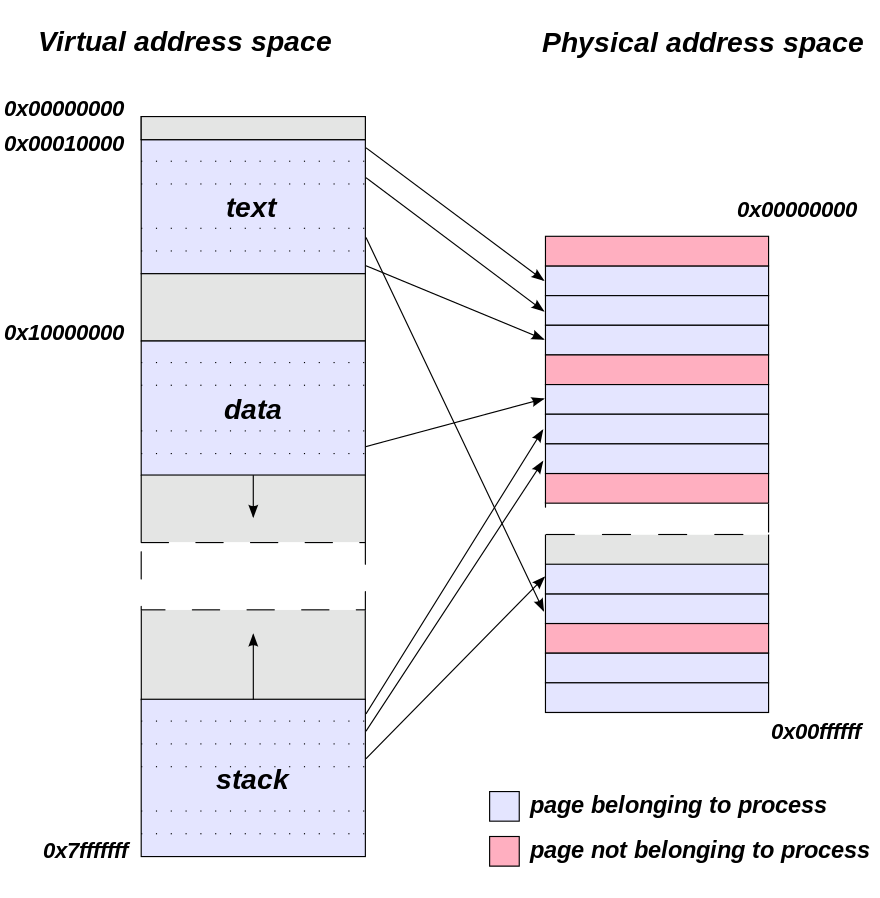There have been various questions on SO on whether or not threads get their own stack. However I fail to understand how the OS implements or how do OSs generally implement one stack per thread. In OS books the memory layout of a program is shown as thus:

Note that it can be considered as a contiguous block of memory ( virtual memory). I would imagine some part of the virtual memory space is divided among the stacks for the threads. Which brings me to the second part of this question: a popular technical interview question involves trying to implement 3 stacks using a single array. Is this problem directly related to solving the implementation of thread stacks.
I summarize my questions thus:
- How does a modern day OS, say Linux divide the memory space for stacks of different threads?
- Is the "3 stacks using 1 array" directly related to or an answer for the above question?
PS: Perhaps images to explain how the memory is divided for different thread stacks would be best to explain.


